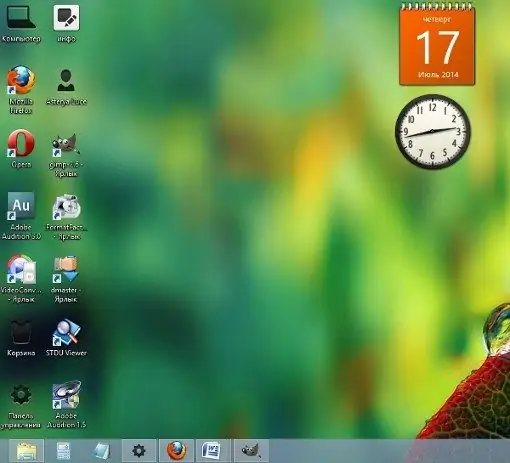Wallpaper changes in Windows 8 in much the same way as in Windows 7. However, the options for customizing the screen are wider than in previous versions of Windows. An inexperienced user can get confused about the intricacies of changing the wallpaper in Windows 8.

Change wallpaper step by step
To change your desktop wallpaper in Windows 8, you first need to go to Control Panel. To do this, move the mouse pointer to the lower right corner of the monitor. Select "Options" from the pop-up menu. Select "Control Panel" from the list that opens.
In the upper right part there is a line "View". For convenience, here you should select the "Large icons" display type. By default, the view is set to Category, which may not be very convenient for finding items. When the Large Icons view is selected, the control panel items are displayed in a list.
Open the "Display" window from the list of elements. In the window that opens, go to the "Personalization" menu located at the bottom in the left column. Here you can choose a ready-made theme to change the background, screensaver and system sounds at the same time. You can also create your own theme.
If you only want to change the desktop background, you need to click Desktop Background. In the "Select desktop background" window that opens, select an image for the wallpaper. You can choose a picture from the Windows Desktop Backgrounds folder, or find the picture you want from a different location. To find an image from a different location, you need to click "Browse" and select the folder with the images.
If you select one picture as the background, it will be the permanent background until the background is manually changed again. And if you select a lot of pictures, then they will successively replace each other at a given time interval.
After choosing a wallpaper, you need to choose how it will be located on the screen. To do this, select one of the positions from the "Image Position" list - "Fill", "Fit", "Stretch", "Mudge" or "Center".
After making the necessary settings, click on the "Save changes" button. Changes will not take effect without clicking on this button.
Additional settings
You can also change the background color from the Select Desktop Background window. To do this, click "Change background color" and set the desired color. The background color will be visible on the screen if the position of the background image is "Center". You can also see the background color when the wallpaper is set to Fit to size, assuming the image is small or medium in size.
To change the color of the taskbar and window borders, in the "Personalization" window, select "Color". Windows 8 provides color intensity, hue, saturation, and brightness settings. But you can also limit yourself to choosing a ready-made color template.






